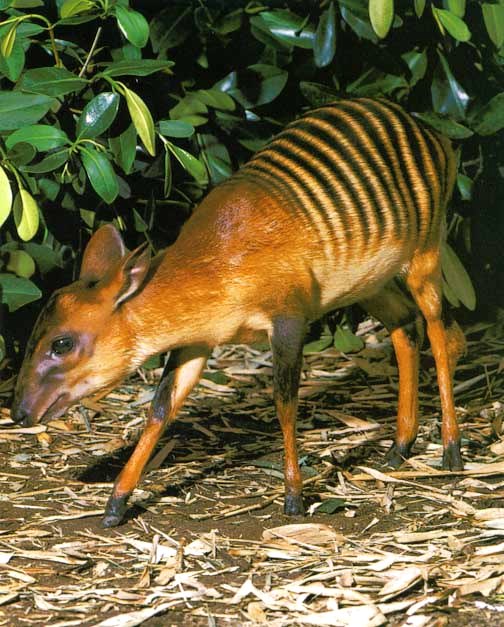Facts About Zebra (Striped-back) Duiker
The zebra duiker, also known as the banded or striped-back duiker, is a small, distinctive antelope primarily found in Liberia, Ivory Coast, Sierra Leone, and occasionally Guinea. This species is believed to be one of the earliest duikers to have evolved. Its scientific name is *Cephalophus zebra*, and it belongs to the genus *Cephalophus* within the Bovidae family. The name "zebra" is derived from the characteristic stripes on its back, resembling those of a zebra.
These duikers possess striking gold or red-brown coats adorned with zebra-like stripes, dark markings on their legs, and russet-colored faces. They inhabit lowland primary rainforests and have a diet comprising fruits, foliage, and seeds. Occasionally, they also consume small rodents. Zebra duikers have a gestation period of 221 to 229 days and typically give birth to one calf at a time.
Sadly, zebra duikers are considered vulnerable due to deforestation, habitat loss, and overhunting. The wild population is estimated to be around 28,000 individuals. These animals are generally solitary and exhibit different behaviors depending on their environment: they are active during the day in captivity but tend to be nocturnal in the wild. Their stripes and thickened nasal bones provide protection from predators.
Zebra duikers are hunted for bushmeat, and their hides and other non-edible parts are utilized by humans. Conservation efforts are critical for their survival, with protected areas such as Gola National Park in Sierra Leone, Sapo National Park in Liberia, and Taï National Park in Ivory Coast playing a vital role. These measures are essential to prevent the extinction of this remarkable species.

 Ivory Coast
Ivory Coast